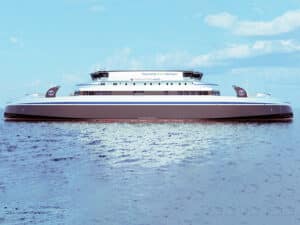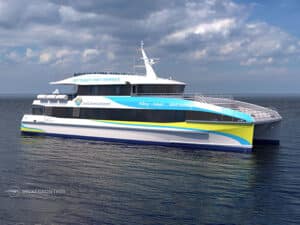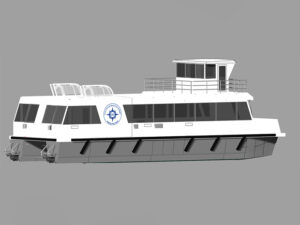
Canada TSB issues report on 2011 BC Ferries’ hard docking
Written by Nick Blenkey MARCH 13, 2013 — Canada’s Transportation Safety Board (TSB) has released its investigation report (M11W0211) into a December 2011 accident in which British Columbia Ferry Services Inc.’s (BCFS) Coastal Inspiration struck the berth at Duke Point, British Columbia. Crew and passengers suffered minor injuries in the accident, and there was extensive damage to both the vessel and the terminal.
MARCH 13, 2013 — Canada’s Transportation Safety Board (TSB) has released its investigation report (M11W0211) into a December 2011 accident in which British Columbia Ferry Services Inc.’s (BCFS) Coastal Inspiration struck the berth at Duke Point, British Columbia. Crew and passengers suffered minor injuries in the accident, and there was extensive damage to both the vessel and the terminal.
The 160 m long, 1,650 passenger, 370 vehicle capacity, Coastal Inspiration is one of BC Ferries’ three “Super-C Class” ferries, which are currently the largest double-ended ferries in the world. They were delivered from German shipbuilder Flensburger Schiffbau-Gesellschaft between 2006 and 2008.
The investigation found a number of contributing factors to the accident, including a lack of adherence to procedures and familiarity with the operation of the propulsion system by the bridge team in an emergency.
On December 20, 2011, the vessel left Tsawwassen on time at 12:45 for its fourth trip of the day, with 346 passengers, 129 vehicles, and a crew of 31 on board. At 14:50, the vessel struck the berth at a speed of approximately 5 knots. Seven passengers and 9 crew members sustained minor injuries as a result of the hard landing and were treated on board. The bow door, the starboard side shell, and the rubbing plate of the ferry were damaged, putting it out of service for 23 days. The terminal sustained damage to the port and starboard berth walls, to pilings and to various electrical fittings, and was out of service for 122 days.
On April 11, 2012, the TSB issued a Marine Safety Information letter (MSI 04/12) to BCFS advising that the speed of advance was a significant factor in the striking.
The TSB investigation found that procedures for testing the propulsion control equipment before berthing were not followed. This meant that a malfunction in the controls went undetected until too late. The investigation also found that the vessel’s bridge crew was unfamiliar with the operation of this control in an emergency.
Since the accident, BCFS has made a number of changes to its propulsion control system to provide a warning to bridge crews when the system malfunctions.
BCFS has also improved a number of procedures and developed a schedule of critical failure response drills to ensure that contingency plans are exercised by all key personnel. It has also incorporated verification of responses to critical-system failures into mandatory familiarization training, which is verified in periodic drills.
Conclusions Findings as to causes and contributing factors
- The bow propeller was engaged but not tested as required prior to arrival, which precluded the bridge team from realizing that the pitch control was not functioning.
- The bow propeller pitch control was used once the vessel was at the abort position, in close proximity to the berth, limiting the time for the bridge team to react when it did not respond.
- An isolating amplifier in the propulsion switchboard malfunctioned, causing the overload protection system to activate. This prevented the electronic signal from the pitch control handle from adjusting the pitch on the bow propeller.
- The bridge team did not switch from normal to emergency mode. As the mode was not set to Emergency, the master’s attempts to engage the PITCH AHEAD and PITCH ASTERN push buttons were ineffective at regaining control of the pitch.
- Without the braking effect of the bow propeller, and with the astern propeller providing thrust ahead, the vessel struck the berth at a speed of approximately 5 knots.
Findings as to risk
- The operation of equipment for a purpose other than the one intended may result in the equipment being disassociated from its designated function.
- If the bridge team does not participate in regular drills addressing malfunctions of the propulsion system, it may not be proficient in taking mitigating action during an emergency.
- If safety-critical equipment essential for a key operation is not tested before its use, the crew may have reduced time to react in the event the equipment fails to respond.
- Without an alarm specifically linked to safety critical equipment that signals the equipment’s malfunction, the crew may be unaware of the failure, putting the vessel, its passengers and crew at increased risk.
- When voyage data recordings are not available to an investigation, the identification and communication of safety deficiencies to advance transportation safety may be precluded.
Read the report HERE





Leave a Reply
You must be logged in to post a comment.